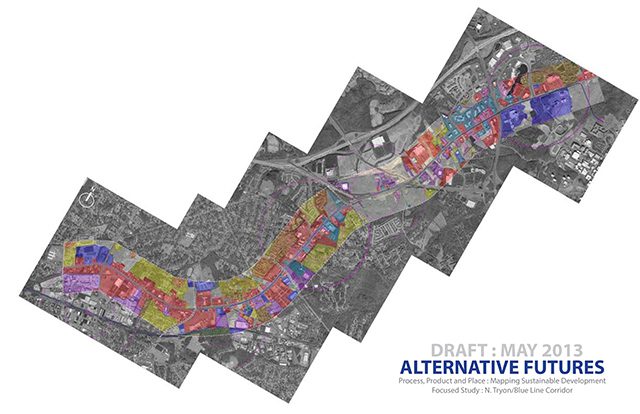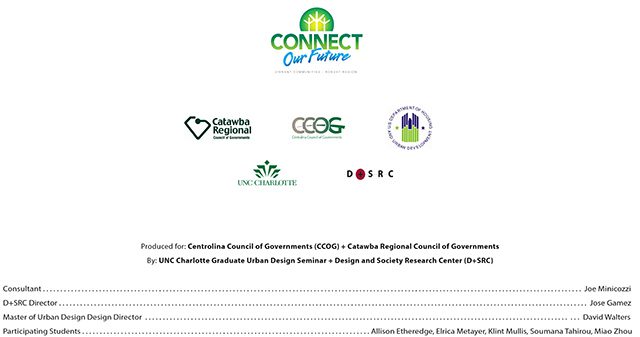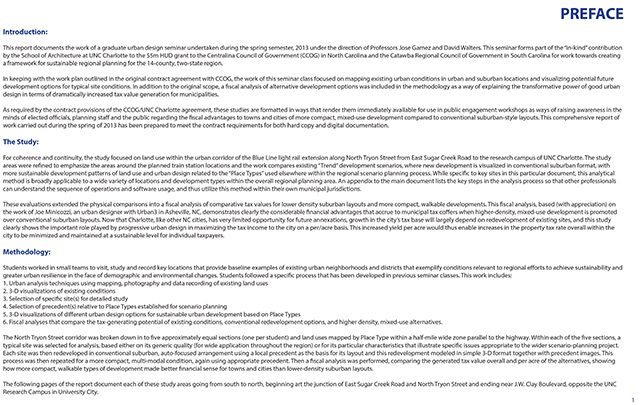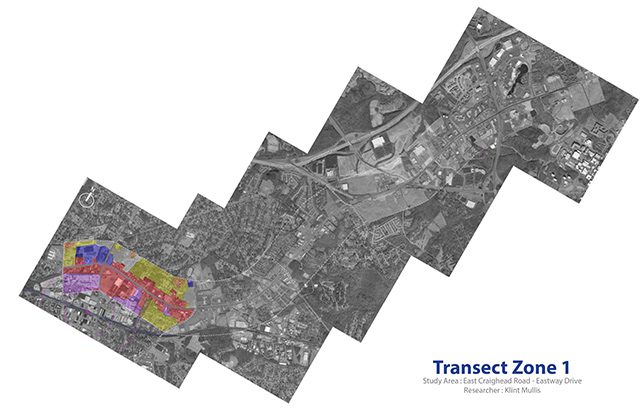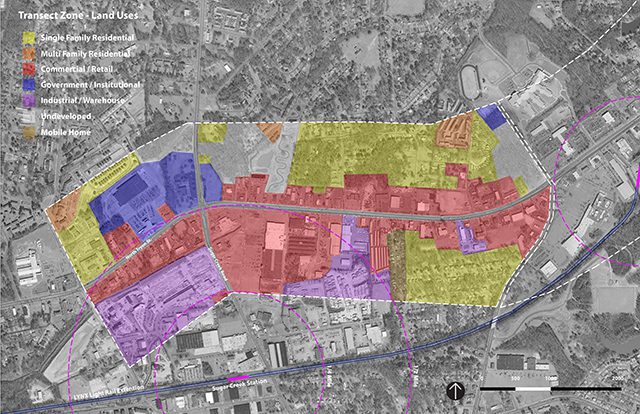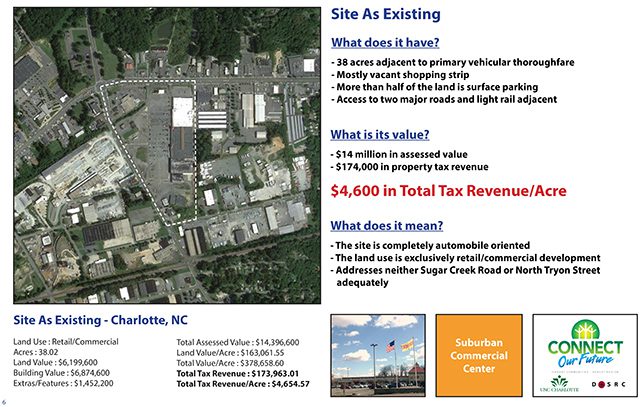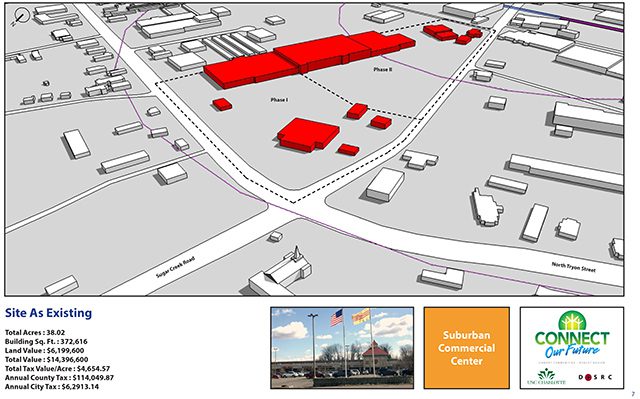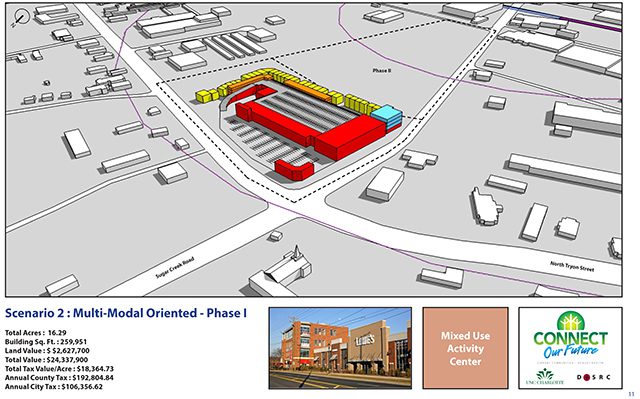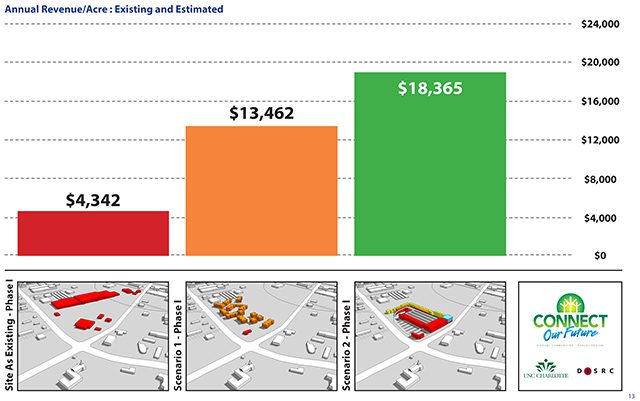Alternative Futures Report
The work in this seminar workshop class (spring 2013) was a part of a larger research project funded by a $5m federal grant from the Housing and Development Department and the Environmental Protection Agency to the Centralina Council of Governments and the Catawba Regional Council of Governments, local non-profit organizations that assist local governments in regional planning issues. The purpose of the grant is to fund a 3-year project to develop a framework for sustainable development for the Charlotte region, whereby we can meet challenges of climate change, demographic shifts in the region’s population, and take advantage of opportunities for economic development. Success in these endeavors rests largely on changing the pattern of settlement in our region to ones that are resilient to long-term changes in climate, energy use/costs and several other factors.
The role of the CBL and the Urban Design Graduate program was to help the public and elected officials in our region visualize these changes, and to help them understand how alternatives in urban form and typologies can bring substantial long-term advantages. This seminar workshop played a key role in that visualization process by investigating speculative approaches to future sustainability at the level of urban and community design. By focusing upon the N. Tryon corridor and the impending light rail development that it will feature, this workshop examined key sites and their potential development opportunities. This gallery features an example of one of those key study areas and the student findings that were developed.
Special Note:
The class will be assisted by Joe Minicozzi, and urban designer and fiscal analyst from Urban-3 in Asheville, NC, who will present information and methodologies about the fiscal impacts on tax revenues of different urban typologies, and how density, particular design types and urban strategies can help improve municipal tax revenues at the same time as they combat suburban sprawl.
